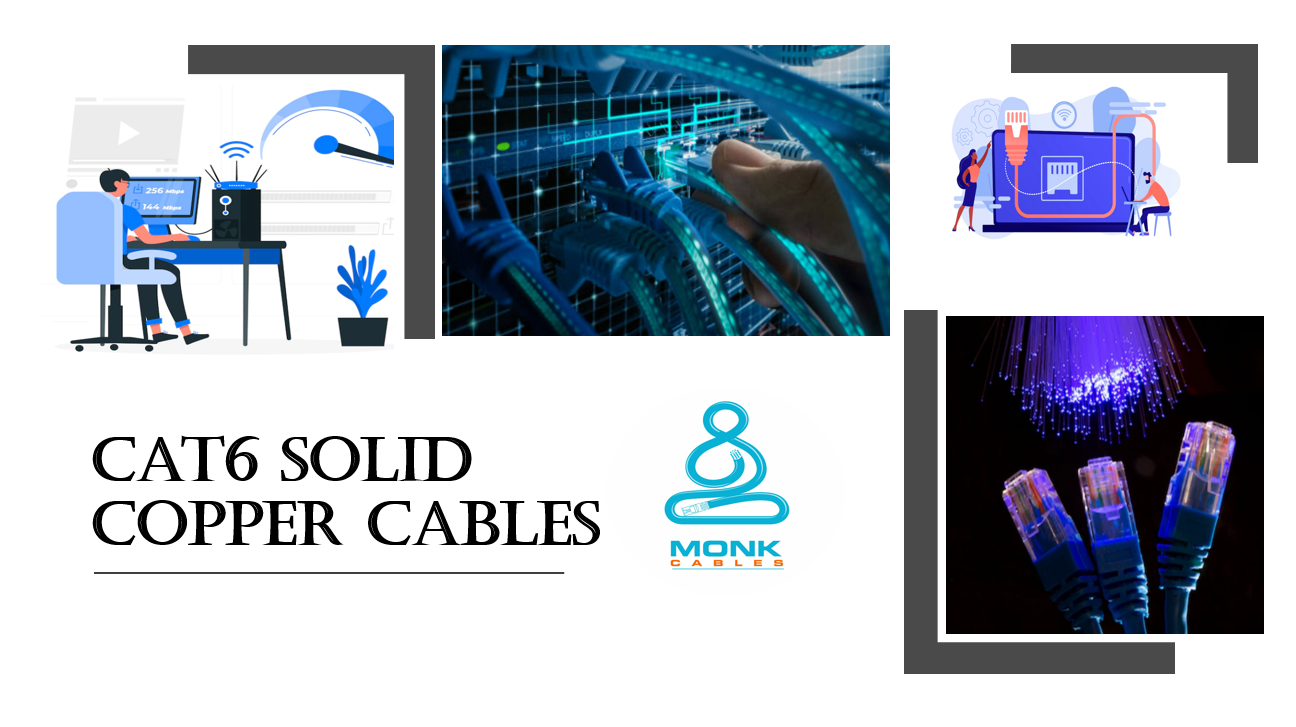At some point in time, you may have found yourself in a situation where you need to choose between Cat6 Solid Copper and Cat7 cables for your networking needs. In this article, we will help you make an informed decision by providing a detailed comparison of the two cable types.
First let’s talk about what Cat6 Solid Copper Cable & Cat7 cable are. Cat6 Solid Copper is a standard cable that is widely used for Ethernet networking. It has a bandwidth of up to 250MHz & can support data speeds of up to 10 Gbps over short distances. The solid copper construction of cable ensures minimal signal loss and interference.
On the other hand Cat7 is a newer cable standard that is designed to support even higher data speeds over longer distances. It has a bandwidth of up to 600 MHz and can support data speeds of up to 10 Gbps over distances of up to 100 meters. The cable has a shielding system that reduces crosstalk and electromagnetic interference, ensuring a reliable connection.
Now, let’s compare the two cable types in more detail:
Bandwidth:
As mentioned earlier, Cat6 Solid Copper has a bandwidth of up to 250 MHz, while Cat7 has a bandwidth of up to 600 MHz. This means that Cat7 can support more data traffic and higher speeds, making it a better choice for high-traffic networks.
Distance:
Cat6 Solid Copper can support data speeds of up to 10 Gbps over short distances, typically up to 55 meters. In contrast, Cat7 can support data speeds of up to 10 Gbps over longer distances of up to 100 meters. This makes Cat7 a better choice for larger networks that require longer cable runs.
Interference:
Cat6 Solid Copper cables are prone to interference from other electronic devices, which can cause data loss or slow speeds. On the other hand, Cat7 cables have a shielding system that reduces electromagnetic interference and crosstalk, making them more reliable for high-traffic networks.
Cost:
Cat6 Solid Copper cables are less expensive than Cat7 cables, making them a more budget-friendly option for small to medium-sized networks. However, for larger networks that require longer cable runs and higher speeds, Cat7 cables may be a better investment in the long run.
Cat6 Solid Copper:
As we mentioned earlier, Cat6 Solid 1000ft Copper is a widely used cable that has been around for several years. One of the main advantages of Cat6 Solid Copper is that it has a solid copper core, which makes it less prone to signal loss and interference. The cable is also more flexible and easier to install than other cable types, making it a popular choice for both residential and commercial networking.
Another advantage of Cat6 Solid Copper is its compatibility with a variety of devices, including routers, switches, and modems. The cable can also support Power over Ethernet (PoE), which allows for the transmission of both data and power over a single cable. This makes it a good choice for devices such as IP cameras and VoIP phones.
Cat7:
Cat7 is a newer cable standard that has been designed to support higher data speeds and longer distances. One of the key features of Cat7 is its shielding system, which is designed to reduce electromagnetic interference and crosstalk. The cable is also backward compatible with Cat6 and Cat5 cable types, making it a versatile option for a variety of networking needs.
Another advantage of Cat7 is its ability to support multiple data streams simultaneously, making it a good choice for high-traffic networks. The cable is also designed to support future upgrades in technology, ensuring that it remains a reliable choice for years to come.
It’s important to note that while Cat7 has several advantages over Cat6 Solid Copper, it is also more expensive. In addition, Cat7 cables are thicker and less flexible than Cat6 Solid Copper cables, making them more difficult to install in some environments.
Cat6 Solid Copper and Cat7 are both reliable and efficient choices for Ethernet networking, each with their own advantages and disadvantages. When choosing between the two, consider your specific networking needs and make an informed decision based on factors such as bandwidth, distance, interference, and cost.
It’s also worth noting that in addition to choosing the right cable type, there are several other factors that can impact the performance of your network. For example, factors such as the quality of your router and the number of devices on your network can impact your network speed and reliability.
Conclusion
In conclusion, when choosing between Cat6 Solid Copper and Cat7 cables, it’s important to consider all of the factors that can impact the performance of your network. By taking a holistic approach to your network setup, you can ensure that you’re making the best possible decision for your specific networking needs. Whether you choose Cat6 Solid Copper or Cat7, both cable types are reliable and efficient options that can provide high-speed and reliable connectivity for your network.
